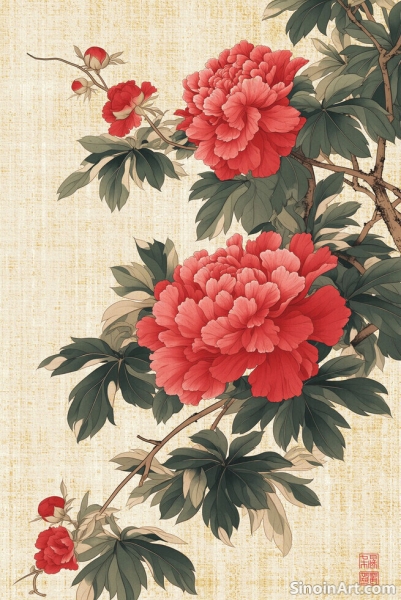The Delicate Dance of the Brush: An Introduction to Gongbi
|
Gongbi, meaning “meticulous” or “fine brush,” is a traditional Chinese painting technique characterized by its highly detailed and realistic depictions. Unlike its expressive counterpart, Xieyi (freehand or spontaneous style), Gongbi emphasizes precise outlines, carefully applied layers of color, and a dedication to capturing the essence of the subject with exceptional accuracy. This style, deeply rooted in ancient Chinese art, continues to captivate art lovers around the world with its refined elegance and technical mastery. It's not just about creating a likeness; it's about imbuing the subject with life and spirit through the painter's painstaking process.  The history of Gongbi painting stretches back centuries, with evidence of its existence found in the early Tang Dynasty. Initially, it was used to portray court scenes, portraits of emperors and nobles, and depictions of auspicious animals and flora. The materials used were, and continue to be, significant – primarily silk or fine paper, ink, and mineral-based pigments, all contributing to the unique visual effect of the artwork. Over time, the subject matter expanded, but the core principles of detailed rendering and color precision remained at the heart of the practice. Famous examples from the Song Dynasty showcase the pinnacle of Gongbi artistry, featuring meticulous bird and flower paintings that continue to inspire artists today.  The process of creating a Gongbi painting is a testament to patience and skill. It begins with a careful sketch, often using charcoal, which is then meticulously traced over with fine ink lines. This outline is the foundation of the painting, and its precision is critical to the final result. Once the ink outline is dry, the artist begins the process of layering color, starting with thin washes and gradually building up the intensity and depth. This layering technique, combined with careful blending and shading, creates a sense of realism and volume, making the subject appear almost three-dimensional on the flat surface.  Gongbi painting is not simply about replicating what the eye sees; it is about infusing the painting with emotion and meaning. Each stroke, each meticulously rendered detail, is chosen with intent, conveying subtle nuances that might be missed in a more casual observation. The choice of color is equally important, often imbued with symbolic meaning derived from Chinese tradition. For instance, the vibrant hues of a peony might represent prosperity, while the elegant simplicity of a bamboo might symbolize resilience and humility. In contemporary times, Gongbi painting has experienced a revival, with artists exploring new themes and techniques while remaining true to the core principles of the tradition. While some maintain the classic subjects of birds and flowers, others are now incorporating human figures, modern landscapes, and even abstract concepts into the meticulous style. This adaptability ensures that the intricate beauty of Gongbi painting continues to thrive and resonate with audiences both in China and around the globe. |
Tag : Chinese Gongbi Painting, Traditional Chinese Art, Meticulous Painting, Fine Brush Painting, Chinese Brushwork
Related information
- The Influence of Gongbi on Contemporary Art
- The Future of Gongbi: Digital Tools and Traditional Techniques
- The Influence of Gongbi on Other Art Forms
- Gongbi vs. Xieyi: Contrasting Styles in Chinese Art
- Gongbi and the Court: Patronage and Artistic Standards in Imperial China
An examination of Gongbi painting's influence on contemporary art, highlighting the adaptation of its techniques, symbolism, and aesthetic principles.
This article explores the future of Gongbi painting, highlighting the use of digital tools to aid in the creative process, facilitate sharing, and expand the art form’s reach, while emphasizing the importance of maintaining traditional techniques.
This article explores the influence of Gongbi painting on other art forms, including decorative arts, illustration, animation, fashion, and digital art, highlighting how its emphasis on detail, linework, and color has inspired creativity across various fields.
A comparison of Gongbi and Xieyi painting styles, highlighting their contrasting techniques, philosophies, and artistic intentions.
The history of Gongbi painting is intrinsically linked to the imperial courts of China, where it flourished under the patronage of emperors and the elite classes. The demand for highly detailed and realistic depictions of the natural world and court life led to the development of the meticulous techniques and refined aesthetic characteristic of the Gongbi tradition. This patronage significantly shaped the evolution and preservation of this distinctive style.